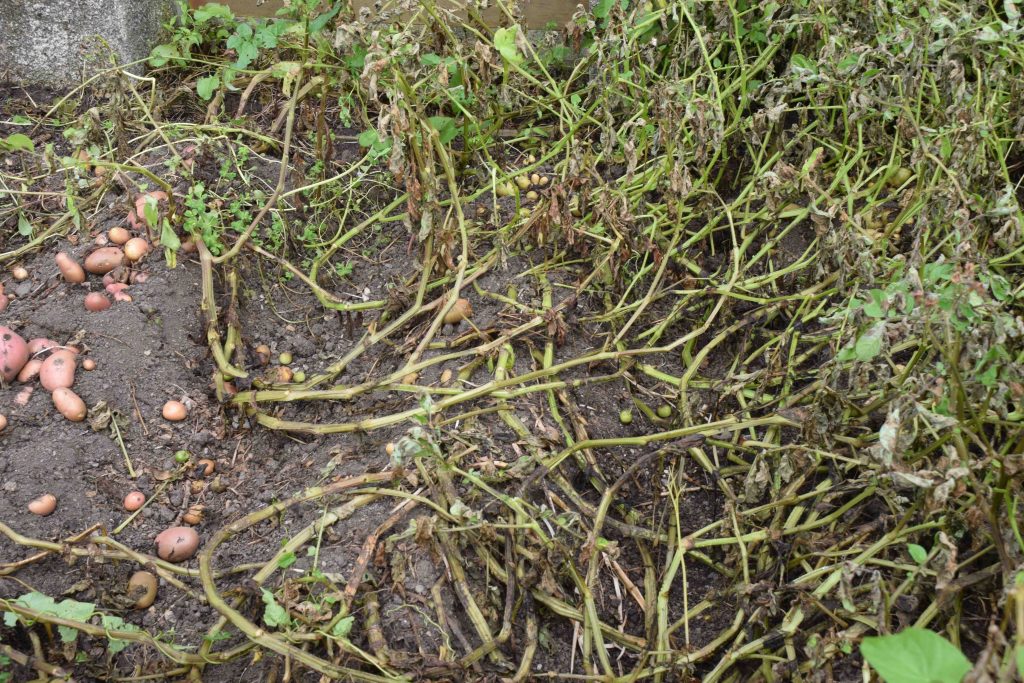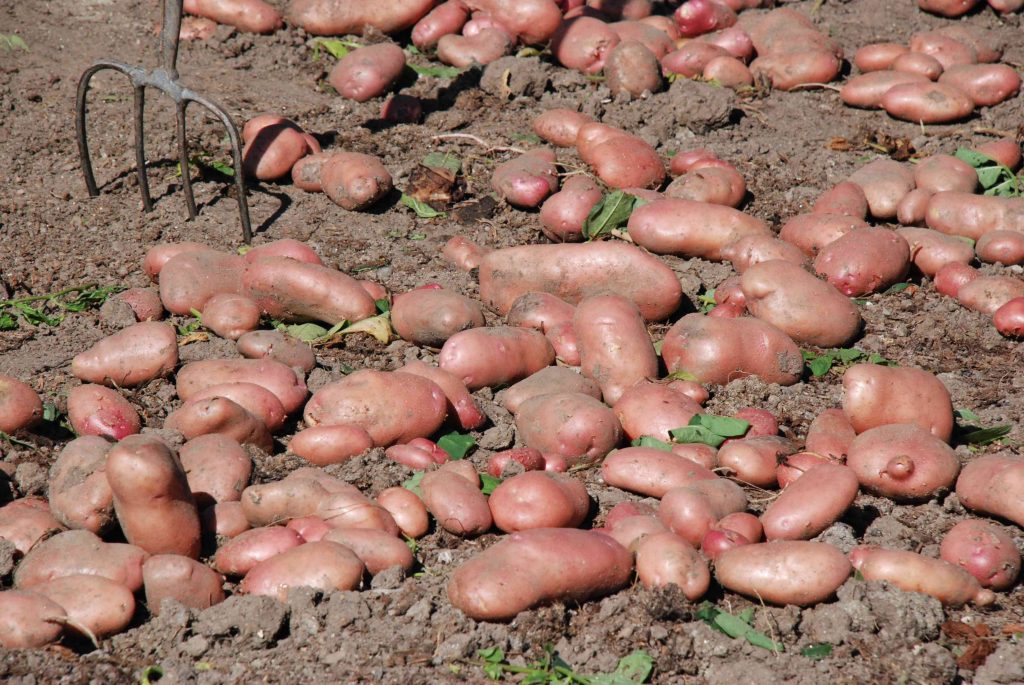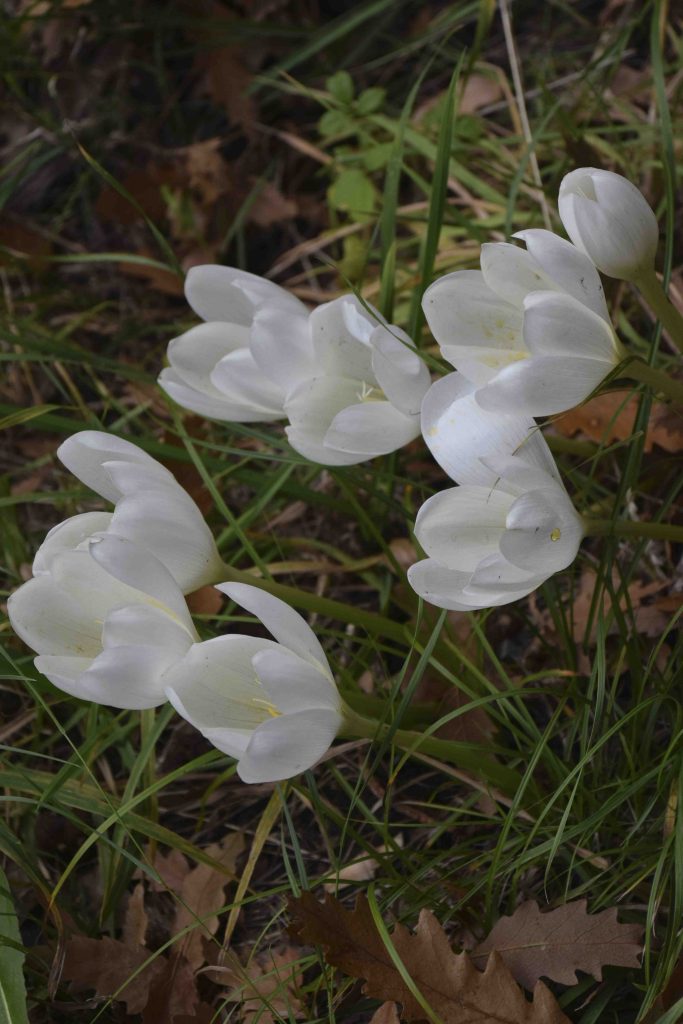It has been an odd year for weather. I know that gardeners, like farmers, are never happy with the weather, whatever it is like, but this year seems to have been especially trying. Hot, dry weather, just when we needed some moisture, in spring, made planting tricky. Then extreme hot weather was an issue. But lately, with high temperatures and storms, high humidity has been an issue. It is perfect for fungi. I have never had such bad blackspot on the roses and even the blackberries have rotted before they ripen.

But, of course, damp, warm weather means potato blight. Living in Ireland I am constantly aware of the problem of blight. This year it has been severe. blight is a disease that cannot really infect potatoes unless there is a ‘Smith period’. A ‘Smith Period’ is 48 hours when the temperature is 10°C or more and the relative humidity higher than 90% for at least 11 hours during the first 24 hours and for at least 11 hours again during the final 24 hours. This allows the disease to germinate and invade the leaves.
The effects are quick and profound, with black or brown patches on the leaves, sometimes with a white coat on the leaves and then the plants collapse. In wet weather, such as this year, the spores get washed onto the tubers and these then rot.
If your plants are affected, dig up the tubers as quickly as possible, ideally in dry weather, allow the tubers to dry before storing. Eat immediately any that are damaged because they will not store.
Tomatoes are affected by the same disease and outdoor tomatoes are commonly affected. Growing them under glass or plastic, to keep the plants dry, usually prevents them from succumbing to blight.
There are no chemicals you can use to protect plants from blight. Early potatoes are usually harvested before blight becomes a problem. But the best way to get a decent crop that is unaffected by blight is to grow resistant varieties. The best of these, and ones I have had great success with, are the ‘Sarpo’ varieties.
The problem, of course, is that these are not ‘Rooster’ or ‘King Edwards’ or whatever your favourite. And some people say they are not the tastiest to eat. But I am rather fussy about my spuds and I have always found them OK. And more importantly, you get a crop. And in my experience – a very decent crop.

The biggest issue, possibly, is that they are all big-growing plants and the tops (haulms) get massive so you need a lot of space.
Jobs for the week

Autumn-flowering bulbs
Autumn-flowering bulbs are rather special; they provide wonderful splashes of colour with a freshness that is welcome in autumn. Most are hardy and easy to grow but most need a sunny spot. The biggest problem is that, because they bloom in September and October, they are not available to buy for long. So get down to Knights now to see what is on offer.
Here are my recommendations:
Colchicums – These (above) have large, goblet-shaped blooms in mauve and white. The flowers appear in autumn but the leaves do not grow till spring. These large corms can be flowered on the windowsill without soil but they do best if you grow them conventionally, planted in sun or part shade. The flowers are beautiful but the leaves are huge so don’t plant where the foliage might swamp small plants in spring. They are often, wrongly, called autumn crocus.
Autumn crocus – The most common of these true crocus, which flower in autumn, is the saffron crocus (Crocus sativus). Unfortunately it is not the best for the garden, needing a summer baking. So buy Crocus speciosus instead. This has beautiful flowers, scented of honey, in October. There are several (similar) varieties and they are beautiful planted in a sunny spot under trees with good autumn colour. They are especially lovely in grass. Last autumn I planted a hundred under two small liquidambars in the grass. They should spread by seed as they establish.
Nerines – these love a hot, baked soil that is dry in summer but are worth trying in any sunny spot as long as it is well drained. Their bare stems with candy pink, spidery blooms almost make autumn worth while! They flower best when well established and take a few years to settle down – all the more reason to plant as soon as possible!
Cyclamen – the true, hardy cyclamen, as opposed to the kinds sold for autumn pots, are C. hederifolium, with pink or white flowers and are long-lived and hardy. Valued as much for their marbled leaves as their flowers they are ideal in shade and should be bought as potted plants rather than dried tubers if possible. They are in bloom now.